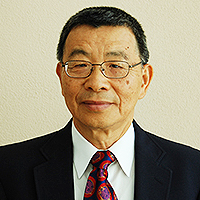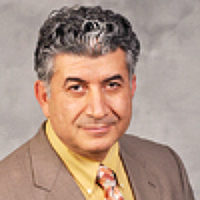Occult Pneumomediastinum - An Atypical Presentation of Chest Discomfort in a Patient with Depression
Published on: 22nd October, 2024
Pneumomediastinum (mediastinal emphysema) is an uncommon condition characterized by the accumulation of air or gas in the mediastinum. Here is a case of a 16-year-old female known to have depression who presented to the emergency department with complaints of shortness of breath, restlessness, chest discomfort, and hoarseness of voice for 2 days. She was initially diagnosed with panic attack, and later on clinical examination, surgical emphysema over the right supraclavicular area was noticed. Chest X-ray was found to be normal, and further imaging with high-resolution computed tomography (HRCT) of the thorax showed pneumomediastinum. In this report, the clinical presentations, radiological features, and management of pneumomediastinum will be discussed.
Efficiency of Artificial Intelligence for Interpretation of Chest Radiograms in the Republic of Tajikistan
Published on: 25th November, 2024
The article presents data from recent publications and own data on screening studies with interpretation of chest radiographs using artificial intelligence CAD (Computer-Assisted Diagnosis), which, according to WHO recommendations, provides more accurate clinical thresholds for deciding who needs to take a sputum test. Another aspect of the WHO recommendations is the cost-effectiveness of CAD as a tool for triaging patients with tuberculosis symptoms in low-income countries with a high incidence of tuberculosis. Compared with smear microscopy and GeneXpert, without preliminary sorting, the use of mobile digital X-ray machines equipped with a CAD tool reduces costs, allowing sorting of individuals suspected of having tuberculosis for testing on GeneXpert, while reducing the time to start tuberculosis treatment.Thus, conducting a study using portable X-ray machines using a CAD program is a low-cost and easy-to-implement method, does not require large funds, does not require separate rooms, is highly effective, has good image quality, allows you to quickly clarify individuals suspected of having tuberculosis, differentiating it from other pathological changes in the lungs.Our experience shows that machine analysis of chest computed tomography data, due to the higher resolution capabilities of the method and the absence of fundamental disadvantages of radiography, including the effect of shadow summation, the presence of “blind” zones, etc., is finding increasing application in both diagnostics and screening of respiratory diseases. Our use of this tool allowed us to identify additional new cases of phthisio-onco-pulmonary diseases in field conditions.
Anterior Laparoscopic Approach Combined with Posterior Approach for Lumbosacral Neurolysis: A Case Report
Published on: 25th November, 2024
Background and importance: Sacral fractures often lead to injuries of the lumbosacral nerve, which will cause tremendous damage to the patient’s motor and sensory functions. At present, the most commonly used surgical method is the posterior median approach, the extent and degree of neurolysis are often insufficient, so the effect of neurolysis is not well, and the functional recovery of patients after operation is often incomplete.Clinical presentation: The patient was a 17-year-old male who accidentally fell from a height and landed on his hip. The main clinical feature of the patient was persistent radiating pain in the right lower extremity with right lower limb sensorimotor disorder. The results of the X-ray examination indicated a sacral fracture and a right pubic fracture. After the injury, the patient underwent pelvic internal fixation surgery within 72 hours. Then 6 months after the surgery, there was no significant improvement in right lower limb function, and the patient came to our hospital seeking treatment. Considering the severe lumbosacral plexus injury and the history of surgery, we performed an “Anterior surgery approach combined with posterior approach for lumbosacral neurolysis” for the patient, postoperative radiation pain disappeared completely, and there were significant improvements in the muscle strength of some muscles and sensory function.Conclusion: The relaxation of the lumbosacral plexus is usually performed through a single surgical approach, which has great limitations in the effect of relaxation. Here, we demonstrate a case in which posterior lumbar incision and anterior laparoscopic lumbosacral plexus neurolysis can benefit the patient, the lumbosacral nerve was released to a great extent. We aim to bring this case to the attention of our worldwide neurosurgical colleagues and share our surgical approach to assist those who may encounter this case in the future.
Unveiling the Impostor: Pulmonary Embolism Presenting as Pneumonia: A Case Report and Literature Review
Published on: 5th February, 2025
Pulmonary Embolism (PE) can present with symptoms resembling pneumonia, creating a diagnostic challenge, particularly in patients with comorbidities. We report the case of a 67-year-old male who presented with cough, hemoptysis, shortness of breath, fever, and pedal edema. Initially diagnosed with consolidation based on chest X-ray findings, he was treated with antibiotics. However, persistent symptoms prompted further evaluation, leading to the diagnosis of PE with pulmonary infarction and deep vein thrombosis on computed tomography pulmonary angiography and Doppler ultrasound. This case highlights the need to consider PE in the differential diagnosis of consolidation, particularly in high-risk individuals, to avoid delays in appropriate management.
The Role of Genetic Mutations in the HPGD & SLCO2A1 Genes in Pachydermoperiostosis Syndrome
Published on: 1st May, 2025
Pachydermoperiostosis, also known as Primary Hypertrophic Osteoarthropathy (PHO), is a rare genetic disorder. The three main features are: enlarged fingertips (clubbing), thickened facial skin (pachydermia), and excessive sweating (hyperhidrosis). PHO is characterized by problems with skin and bone growth. Patients with PHO usually have coarse facial features with oily, thick, grooved skin on the face, joint pain, enlarged fingertips and toes, and hyperhidrosis of the hands and feet. Symptoms vary individually; however, men generally present with more severe manifestations. X-rays can help check for features that are not noticeable to the naked eye. There are two genes that are associated with PHO: the HPGD gene, located on the long arm of chromosome 4 at 4q34.1, and the SLCO2A1 gene, located on the long arm of chromosome 3 at 3q22.1 - q22.2. Mutations in the HPGD gene are inherited in an autosomal recessive manner, and the condition is sometimes abbreviated as PHOAR1 or Touraine-Solente-Gole syndrome.
Pulmonary Pleomorphic Carcinoma: A Rare Entity Revisited!
Published on: 4th June, 2025
Introduction: Pleomorphic Carcinoma (PC) is a subset of poorly differentiated non–small cell lung cancer that is diagnostically challenging because it is a rare malignancy of the lung. It shows varying dual-cell components; spindle or giant cells and epithelial cells.Method: We report a case of 68-year-old non-smoking female who presented with cough, fever, pain in the left side of chest & weight loss of recent onset and an abnormal shadow on her chest X-ray. Computed tomography of chest revealed a well defined heterogeneously enhancing cavitatory soft tissue lesion in the posterior basal segment of the left lower lobe with mediastinal lymphadenopathy.Results: Fine needle aspiration cytology& percutaneous lung biopsy confirmed poorly differentiated malignant tumor. Patient underwent a left lower lobectomy. A diagnosis of PC was confirmed after Immunohistochemistry (IHC). Mutation analysis revealed an EGFR exon 21 mutation within the tumor cells. The patient is on Gefitinib based chemotherapy and has remained disease-free for three years post-surgery.Conclusion: PC of the lung is a rare pathological entity. Definite diagnosis may only be made on a resected tumor along with the use of IHC. Surgical resection is the main modality of the treatment. Such rare cases should be documented to establish an optimal management plan and to provide a further insight to targeted therapy.
Browse by Subjects
Chemistry Group Journals
Pharma Group Journals
Mathematics & Physics Group Journals
Clinical Group Journals
- Archives of Food and Nutritional Science
- Annals of Dermatological Research
- International Journal of Clinical Microbiology and Biochemical Technology
- Journal of Advanced Pediatrics and Child Health
- Journal of Pulmonology and Respiratory Research
- Insights in Clinical and Cellular Immunology
- International Journal of Clinical Anesthesia and Research
- Journal of Clinical Intensive Care and Medicine
- Journal of Clinical, Medical and Experimental Images
- Journal of Neuroscience and Neurological Disorders
- Insights in Veterinary Science
- Journal of Stem Cell Therapy and Transplantation
- Archives of Asthma, Allergy and Immunology
- Journal of Child, Adult Vaccines and Immunology
- Archives of Cancer Science and Therapy
- Clinical Journal of Nursing Care and Practice
- Annals of Clinical Gastroenterology and Hepatology
- Journal of Hematology and Clinical Research
- Archives of Pathology and Clinical Research
- Annals of Clinical Hypertension
- Journal of Oral Health and Craniofacial Science
- International Journal of Clinical and Experimental Ophthalmology
- Journal of Radiology and Oncology
- Journal of Clinical Nephrology
- Archives of Clinical and Experimental Orthopaedics
- International Journal of Bone Marrow Research
- International Journal of Clinical Virology
- New Insights in Obesity: Genetics and Beyond
- Advanced Treatments in ENT Disorders
- Journal of Clinical Advances in Dentistry
- Insights on the Depression and Anxiety
- Heighpubs Otolaryngology and Rhinology
- Clinical Journal of Obstetrics and Gynecology
- Archives of Surgery and Clinical Research




